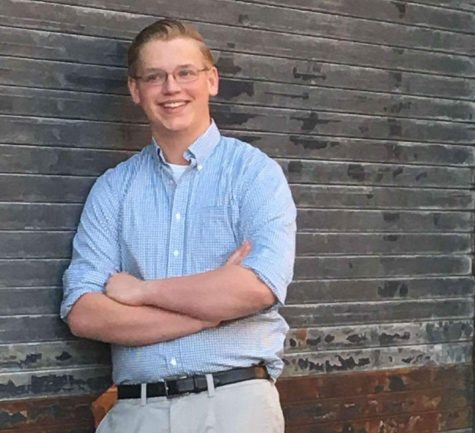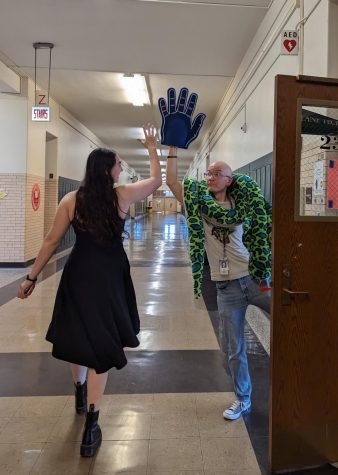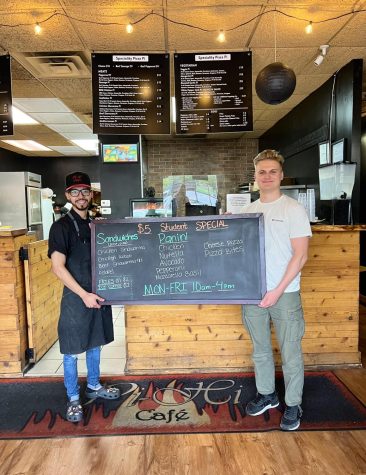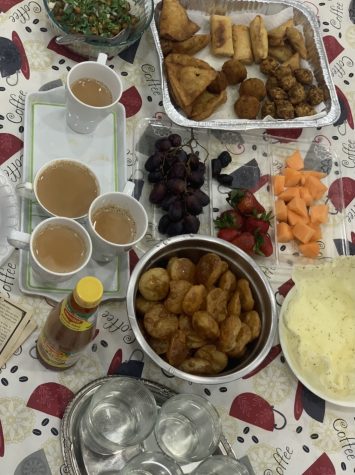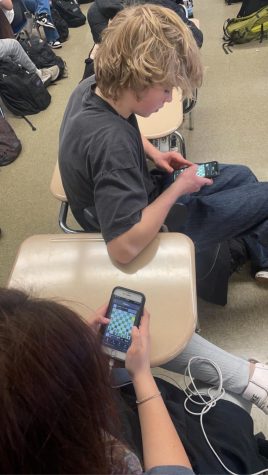Lane students to create ‘Interactive Art’
Students created a moving butterfly using a servo motor and clear acrylic cut with a laser cutter (Photo Courtesy of Max Krolak).
June 21, 2018
Imagine an art gallery where the paintings and sculptures react as you walk by. Imagine observing art that changes as you look at it, like moving sculptures or walls of light. Here at Lane, the Art and Computer Science Departments aim to combine their disciplines to create interactive art installations that incorporate work from both groups of students.
“The idea would be to create an artistic piece that isn’t static but actually changed according to what’s happening around it,” Mr. Law, a computer science teacher, said. “That’s the goal, we’ve never done anything like this before, and as far as we know it’s never been done at a formal level in CPS.”
Interactive art installations are becoming more popular as the technology required to create them becomes cheaper and more accessible. Some colleges, like the University of Chicago, have begun to integrate technology into their art curriculum and create interactive projects. Students in UChicago’s Data and Algorithm in Art class created an arduino based project that used sound and light to respond to audience movements.
Law said that Ms. Custodio, one of the art teachers, and himself have wanted to work on a joint project for a long time. Next year, Custodio is teaching a new class on sculpture that both teachers feel will provide a great opportunity for the departments to collaborate.
“I teach a course called physical computing, where the kids have to create interactive, digital electronics,” Law said. “[Custodio] and I got to talking when she chaperoned our robotics tournament, and it occurred to the both of us that if our students worked together, the students can then create interactive sculptures.”
Earlier this year, the two began an after school activity that encouraged the students from the two departments to work together to make a sculpture that incorporated electronic elements.
Three students from the Computer Science Department are involved with the project. Sinai Martinez, Div. 963; Roberto Jacobo, Div. 968; and Julian O’Hern, Div. 964, all heard about the project through Law’s Physical Computing Class.
“I’m really into the whole computer science aspect and I’ve always been interested in art so I thought it was pretty cool that there was the opportunity to combine those two to make something,” Martinez said.
The students decided to make sculptures of butterflies and use servo motors to make the wings move. Future plans for the project include integrating LED lights and sensors so that the sculptures interact with the people viewing them.
“What we had in mind was we would have butterflies hanging from panels on the ceiling,” Jacobo said. “What would happen is if you were to walk past it the motors would activate and then the wings for the butterflies would flap.”
Two students from the art Department, Samantha Pham, Div. 883, and Haeun Kwon, Div. 868, have been working on the art component the project. Two art teachers, Custodio and Ms. Diamond, are also involved. This year’s project allowed the group to learn what to expect next year when the project takes place on a bigger scale.
“We did learn that communication is really key to doing the work,” Custodio said. “When you’re done with a set and you need to pass it off that the other person is ready to work with it.”
Next year, the Physical Computing and Sculpture classes will be held during the same period to ensure plenty of time for the students to collaborate. Custodio said that she plans to use the first part of the year to teach principles and techniques of sculpture to her students so that they are prepared to work with Law’s students later in the year.


